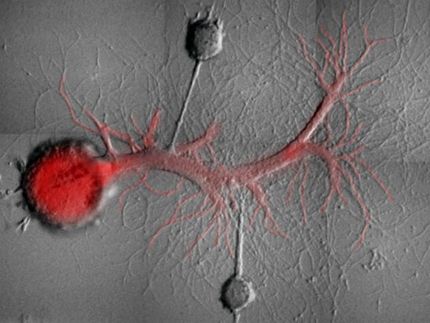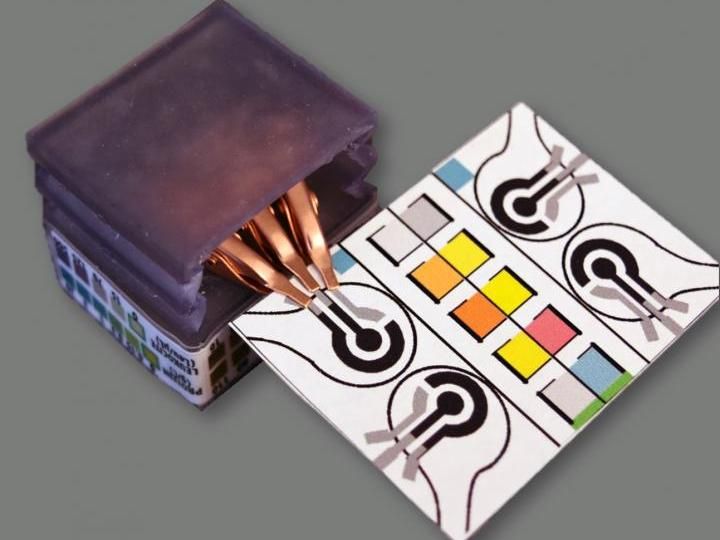New regulatory proteins involved in neuronal circuit formation identified
The regulators observed by researchers at the Institute of Neurosciences (CSIC-UMH) are key to understanding the trajectories followed by axons to reach their destination.
Research at the Instituto de Neurociencias (IN), a joint center of the Consejo Superior de Investigaciones Científicas and the Miguel Hernández University, has identified several dozen new regulators involved in guiding axons to reach the neurons with which they must connect. This process is essential in the formation of neural circuits or networks during the development of the nervous system. Therefore, the work published in Advanced Science is key to understanding a process whose alterations can generate neurological disorders and congenital defects throughout life.

For the development of the brain, it is essential that the axons of neurons are directed to where they will establish synapses with other neurons.
Pixabay
For the perfect development and functioning of the adult brain, it is essential that the axons of the different types of neurons that make up the nervous system grow and move towards the places where they will establish synapses with other neurons. Until now, most of the molecules known to be involved in this process were signaling proteins that tell axons where they can and cannot navigate in the developing brain, or when to turn on their way to connect with other neurons. However, transcription factors directly involved in the regulation of these signaling molecules that mark the path of axons to their final destination had hardly been identified.
Now, the work of the IN (CSIC-UMH) led by Eloísa Herrera, in collaboration with Ángel Barco, which is supported by a grant from the CaixaResearch call for research in health of the "la Caixa" Foundation, has expanded the number of regulatory molecules involved in this process by analyzing two subpopulations of retinal cells, called ganglion cells. These cells, although they have equivalent functions in the processing of visual information, differ in the trajectory that their axons follow on their journey to brain structures such as the thalamus or the superior colliculus. Thanks to these different paths, the brain can process the images received from each eye and generate 3D vision.
The axon pathway
Retinal ganglion cells project their axons to two different routes: to the cerebral hemisphere on the same side of the eye from which they depart (ipsilateral ganglion cells), or to the opposite hemisphere (contralateral ganglion cells); in this case crossing an X-shaped structure called the optic chiasm, which serves as a crossroads for the visual axons. The axons of the neurons located in the area of the retina closest to the nose cross the midline through the optic chiasm projecting to the opposite hemisphere, while the rest of the axons avoid the midline at the level of the optic chiasm to project to the same side of the brain from which they originate. Precisely, among the new genes identified in this study, gamma-synuclein stands out as an essential element to induce midline crossing.
"This binary decision of visual axons to cross or not the midline at the optic chiasm is essential to perceive the world in 3D and represents an excellent paradigm to investigate the mechanisms that allow the connection of visual neurons with other distant neurons in the brain during late embryonic development. To find new regulatory mechanisms involved in defining the axonal trajectory, we performed a multi-omics analysis comparing gene expression profiles (the transcriptome) and chromatin occupancy in retinal neurons projecting to the ipsilateral and contralateral cerebral hemispheres," says Eloísa Herrera.
Although numerous proteins that regulate axonal guidance have been identified over the past three decades, the epigenetic and transcriptional mechanisms that control their expression remained poorly understood. "Our results demonstrate that the new regulators of axon guidance identified operate in different contexts and open up new avenues of research," highlights the researcher.
Multiomics analysis
The multiomics analysis of the two subpopulations of retinal neurons used in this research, differing only in the trajectory followed by their axons, has been key to finding new genes encoding proteins not previously involved in axon guidance. Of particular interest is the identification of new transcription factors involved in this process, since it is these proteins that control the expression of other genes by binding to specific DNA sequences and determining where and when they should be activated or repressed.
"In summary, our analyses have led to the identification of dozens of new genes potentially involved in axonal pathway selection. These results open the door to innovative therapeutic approaches aimed at restoring damaged neuronal circuits," concludes Herrera.
Note: This article has been translated using a computer system without human intervention. LUMITOS offers these automatic translations to present a wider range of current news. Since this article has been translated with automatic translation, it is possible that it contains errors in vocabulary, syntax or grammar. The original article in Spanish can be found here.
Original publication
Marta Fernández-Nogales, Maria Teresa López-Cascales, Verónica Murcia-Belmonte, Augusto Escalante, Jordi Fernández-Albert, Rafael Muñoz-Viana, Angel Barco, and Eloísa Herrera; "Multiomic Analysis of Neurons with Divergent Projection Patterns Identifies Novel Regulators of Axon Pathfinding."; Advanced Science.
























































